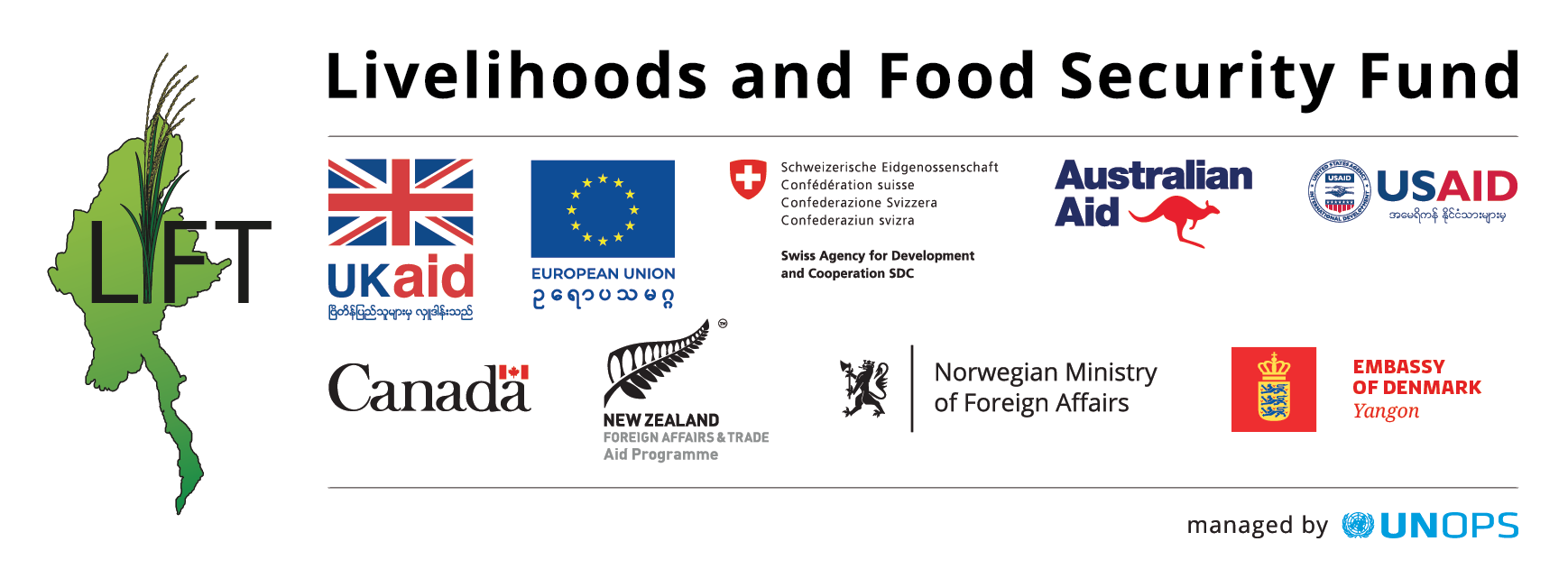
Myanmar ranks second globally, behind Honduras, in terms of the threat posed by loss of agricultural productivity due to climate change. Despite progressive efforts towards disaster resilience by the Government of Myanmar in collaboration with donors, the international and local communities, the country is less prepared than some of its neighbours to cope with natural disaster.
The LIFT donors swiftly allocated $1 million of new funding towards re-establishing livelihoods. On August 12 and 13, a team led by LIFT’s Lead Technical Officer, Steve Dowall, visited villages in Pakkoku Township with partners Pact and ActionAid, to assess the situation and listen to community voices. Though the water level had receded, thick mud remained, much of it covering farmland. Transportation was a challenge in low lying villages, where many were living under temporary tarpaulin shelters. Basic infrastructure such as roads and schools were damaged.
Voices from the community
“Though we face flooding every year, this has been the worst ever. The water flowed very fast and left a thick layer of mud. Normally we would start growing chilli next month but now that’s impossible. We can remove the mud once it is dry enough, but we’ll need high power tractors which cost around 22,000 kyats per hour. It will take much longer than usual and we can’t afford that. Despite everything, we will try to grow ground nuts when the monsoon ends. We have no idea about what the yield will be but will grow a crop for cow food at least. We can’t do anything besides farming. Now have no income and have to borrow money and pawn our belongings just to cover daily needs.”
Villagers from Shar Pin Kaing village, Pakokku Township, Magway Region
“We usually keep seeds in stores, but the seeds were ruined when the stores flooded. This is terrible for us. The water level rose by 6 to 8 feet, the whole village had to run to the embankment to escape. We have lost everything – our seeds and the prepared land. The worst thing is we do not know how fertile the soil is - it looks as if there is sand under the mud. In our experience, a plant cannot take root in this kind of soil. So we will need fertiliser, which will cost money. We had an agriculture loan from the Cooperatives Bank of 200,000 kyats per acre of farmland. Last year, we used 300,000 kyats for seed, labour and fertiliser for an acre. This year it will cost us more because of the mud. We’ll have to borrow from moneylenders at 5 to 10% interest.”
Farmer U Tin Aye, ground nut beans pulses, Kyun Ka Lay village, Pakokku Township, Magway Region
U Myo Myint Aung, Division Manager, PGMF (Magway)


